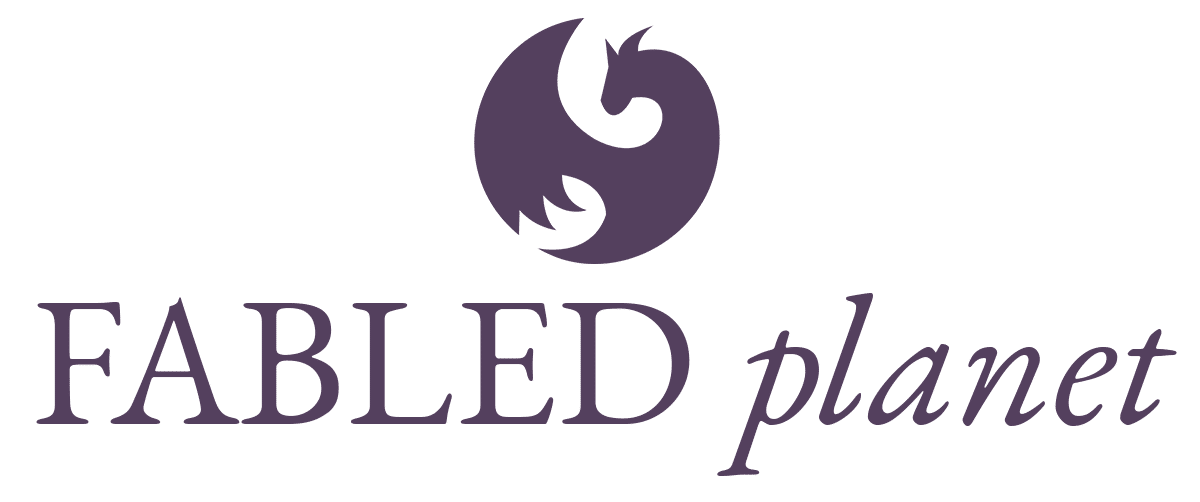If you love worldbuilding, inventing a language for your story world – be it a few words or a full-blown grammar – can be almost as fun as writing the story itself. But it can also be one of the hardest elements to work into your story in a meaningful way. You don’t want make readers flip to a glossary every few sentences, but you also don’t want your carefully crafted words to become awkward window-dressing.
So how can you make your fictional language matter?
Conflict.
When your language(s) becomes a small or large obstacle on your characters’ journey, readers engage with it.
Here are a few of the ways that can happen.
1. A language barrier
The most obvious conflict, but perhaps the easiest for you to implement and for readers to sympathise with. Perhaps your character needs to escape, but a guard who doesn’t speak their language is in the way. Or two characters who can’t speak each other’s tongues fall in love at first sight. Or, lost in a big city surrounded by inscrutable signage and people, your character tries to find their way. This can be a conflict in itself, stirring up a range of emotions in the character, or it can make a pinch point even worse.
2. An unreadable script
An ancient artefact holds a game-changing clue, but it’s in a language that none of the characters know how to read. Perhaps the smartest among them tries to decipher a few words, but gets them wrong. Or this new find will send the characters on a mission to track down the one person in the world who can read it and to persuade them to help. A text in your invented language could become the catalyst – or solution – for a crucial plot problem.
3. Social isolation
Being surrounded by a language you can’t speak – or speak well – can be a lonely experience and cause, or deepen, a character’s emotional and social conflicts. Sensing an easy target, those around the character might even use language to exclude or bully them, such as by calling them names they don’t understand or intentionally talking too fast. This is all the more likely if the character is from a culture currently in tension with the dominant culture.
4. A suspect interpreter
It’s the job of interpreters and translators to smooth out language conflicts and act as neutral third parties. But not all of them can be trusted. What if your character realises that the interpreter who they’ve been relying upon in a life-or-death negotiation has an agenda of their own?
5. ‘We have no word for that.’
Compare any two languages, and you’ll find that not all words have a one-to-one translation. This can be used to not only create plot obstacles but also to explore your story’s themes. How might a soldier react if thrown into a culture whose language has no words to describe war, for instance? There’s also the option to go 1984 with this and have your character discover a more sinister reason for the inability of a people to express certain concepts.
6. Dualities and dichotomies
Another option is to put your invented words in conflict with each other. How might a culture in your story world create dichotomies – maybe ones you personally consider false dichotomies – that divide some people and unite others? Religion can play a powerful role in this, setting up some traits or objects (or groups of them) as ‘good’ or ‘pure’ and others as ‘bad’ or ‘unclean’. Of course, you can also use your language to create standalone cultural concepts. But pairs of perceived opposites tend to hold the most potential for built-in conflict.
7. A misunderstanding
Even when people understand each other’s languages, they sometimes do so imperfectly. Misunderstandings can create anything from embarrassing moments that make the reader laugh to ambiguity that has them questioning entire character relationships. This can work regardless of whether the characters involved are fluent users of the language.
8. A clash of economic or social classes
In some cultures, economic and social differences are so entrenched that there are words a person is expected or forbidden to use based on their station in life. A character daring to use the language of a group they’re perceived not to belong to can lead to deeply moving moments, whether they’re trying to publicly break down social barriers, privately using the speech of a forbidden lover’s class to make them more comfortable, or celebrating moving up into a new class and new life.
In the end…
There are many ways to make your story world’s language(s) an integral part of the plot. The key is avoid letting conflicts that arise from language feel like arbitrary misunderstandings or contrived obstacles. And, as with most aspects of worldbuilding, perhaps the best ways to do that are to work to make the language feel real and cohesive and to show it used in its natural setting before it starts causing trouble.
Kahina Necaise is the executive editor of Fabled Planet. She is also a content and line editor for its sister brand for writers of historical fiction, The History Quill. When not editing, she can usually be found writing her own fantasy fiction with ancient-history-inspired settings, reading, or going on walks while daydreaming about one of these things.
Do you write fantasy or science fiction?
Join our email list for regular writing tips, resources, and promotions.

